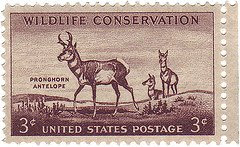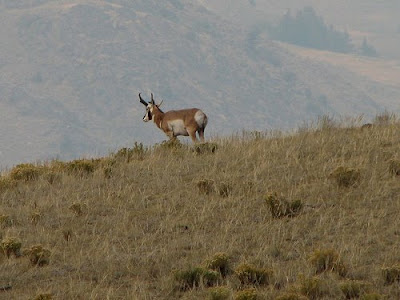Often I hear people discussing what’s the best thing to wear to go for a walk, specifically “trekking” in South East Asia.

Above my old hiking boots. My first pair I spent a two week pay check to buy, I think they were about $65 in 1974. Eventually I trashed them in the salt water on the back deck an anchor boat in the Gulf of Mexico. An ignominious end for a hand made boot by a master craftsman. This pair I bought later in my mid thirties when I had plenty of money to pay the then price tag of $250. They are called Limmers. A typical yearly production run was a thousand pair. They were made around a wooden last of your foot.
Limmer Boots of Intervale NHA common theme of footwear discussions is why bother carrying boots all the way to Asia, when a pair of sandals might do as well or better. I used to be of the same mind but of late have changed my tune. There are caveats, it all depends on where you are going and how far.
The first guest house I stayed at in Chang Mai was developed around the trekking business. The guides taught me to speak some Thai and explained many seemingly inexplicable parts of Thai culture. When I came back to Thailand to work at first for half a year and later on a one way ticket I always stayed at that guest house when in town, my home away from home.
Eventually one of my friends convinced me to go on a trek. It was the typical two night/three day /elephant ride/rafting thing. Being as I was a non paying guest I missed out on the rafting / elephant walk. I also was extremely sick due to being incautious when peeling the cover off some rambutans. The walking was so easy I was able to keep up without strain, even being sick. Leisurely wanders with convenient rests in closely spaced villages I considered to be the norm.
Laos was different...

Above I’m doing the powder mag traverse at an LZ in southern Idaho. Notice the skid marks from my feet where I’d edged on the bolts during previous post-work workouts. I was an obsessed climber.
During the 80s I did a kind of job that required lots of walking in the mountains of Idaho, Wyoming, Utah, and Montana. Half of our pay was by the mile so we covered a lot of ground very quickly often walking hundreds and hundreds of miles, with weight, over rough terrain. On my feet I’m wearing a lightweight pair of European hiking boots. I used to buy discounted pairs in Boulder or Jackson Wyoming. Pivettas, Fabianos, Lowas, and Galibiers. Returns, last years models, any brand, cheap and high quality were all I cared about. I found it was less expensive to buy them for fifty or a hundred dollars on sale and throw them away when they were worn out rather than resole. I also liked the light weight and close cut.

Many of my friends preferred Galibier Super Guides above. They were heavy and didn’t bend much but they could be resoled, and were indestructible. Good for kick stepping in the mornings when the snow was still frozen.

Thinking that walks in Laos would be similar to those in Thailand I took the footwear above on most of my treks. On my very first excursion I took Crocs, a rubber type clog thing. After the second day I switched to the sneakers that I’d carried as backup. Subsequently I wore the sneakers exclusively and the flip flops once I’d reached the villages.
Most of my walks were long drawn out affairs, often going as fast as possible just to make the next village by night. The relocation of many of the villages has caused trails to become obscure and sometimes even disappear. In the wetter seasons there’s lots of slippery mud. In a word footing is usually bad and often worse than that. I did go on one standard commercial trek rated fairly hard but in reality much easier than the more unravelled walks. I think a pair of Tevas or similar would have worked fine. Of course from a stylistic perspective I’d rather go barefoot.
If I ever make it back I swear I’m going to take a good pair of boots with me. Boot technology has changed.

A couple of years ago a neighbour who often works as a hunting guide urged me to hurry on down to Walmart and buy some Herman Survivors as they were on sale. I remember Survivors from when I used to hike as a young teen. High topped leather and heavy. Somewhere along the way the brand got sold and they are now made of cordura, gortex and thinsulate. They are made in China as are almost all boots.
I bought three different styles at that sale, all for around twenty five dollars marked down from fifty or sixty. They were extremely light, water proof in a way my old leather boots could only dream of, and the support was in all the right places without being stiff. A far superior boot for what now amounts to a fraction of an hour of my labour. I was sold.
They are “hunting” boots. Usually having some sort of fashionable camouflage on them somewhere just so you get the idea. They are also high tops and often with some insulation because hunters are often out in the cold. For some reason the big box sporting goods stores clear out their inventory with the seasons. I think it’s cheaper to sell at a steep reduction than to inventory it and sell it to some discounter.

This year I kept my eyes open and bought better brands at a lot larger markdown. My average price was $32, average new prices were $130. Thank you China and the Dominican Republic, just wish we still employed people in our own shoe factories.
Update, I should mention in all honesty that I've had problems with my "buy cheap stuff and just wear it" philosophy. I took two of my unused pair of shoes to Laos and had some uh. . . difficulties. Probably a good idea to take some long walks with any pair of shoes before bringing them with you on the airplane.







